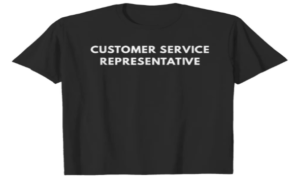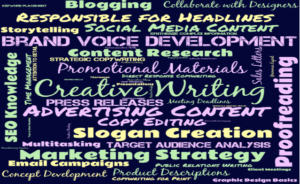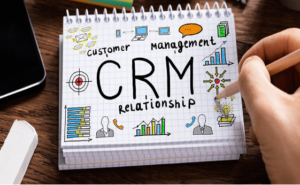How to Write an Effective Job Description in Your Resume?
Your resume is your opportunity to showcase yourself to potential employers, and the job description section is one of its most crucial parts. This section provides specific details about who you are and what you can do, highlighting your skills, accomplishments, and contributions to previous companies. In this blog, we’ll guide you on how to craft an effective job description for your resume, helping you stand out in a competitive job market.
1. Start with a Strong Job Title

Why It’s Important
The job title is the first thing that recruiters will see when they scan through your resume. It sets the tone for your resume or LinkedIn profile, making it clear what position you are aiming for and how you align with the job you’re applying for. A well-chosen job title helps you stand out in a competitive job market and ensures that recruiters quickly understand your professional focus and capabilities. It also helps you to align and come up with an effective job description in your resume that reflects your experiences correctly.
Key Tips for Choosing a Job Title:
Use Standard Titles: Whenever possible, use an industry-standard title that accurately reflects your role. For example, choose “Digital Marketing Manager” instead of “Marketing Specialist” if it better represents what you do.

Target-Job Match: If your previous job title doesn’t match the one you’re applying for but your roles were similar, consider using the target job title. For example, if you were a “Customer Support Associate” and the new position is “Client Services Representative,” you can use the latter as long as it accurately describes your role.
Internal Jargon: Only use company-specific titles that people within the firm will understand. For example, instead of ‘Team Blue Coordinator, ‘consider ‘Project Coordinator‘ or ‘Team Leader.’

2. Write a Brief Overview of Your Role
Why It’s Important
A line that describes your job’s scope provides context for your title and highlights the range and significance of your role. For example, you could write: “A summary of my main responsibilities.”
Key Tips for Writing a Role Overview:
Cut it Down: Keep your summary to 2-3 sentences, focusing on the aspects of your role that relate to the job you’re applying for.
Emphasize your Key Responsibilities: What were your primary duties, and did they align with the job you’re aiming for? For example, if you managed social media campaigns, including content creation and strategy for a B2B audience, highlight that experience.
Add the Scale of Your Role: To highlight the scale of your role on your resume, include specific metrics and details that showcase the scope of your responsibilities. For example, you might write: “Managed a team of 10 to oversee social media campaigns, reaching an audience of over 100,000 users and increasing engagement by 30%. Oversaw a budget of $50,000 for digital marketing initiatives, driving a 20% increase in lead generation.” This approach provides a clear picture of your impact and the size of your role.
3. Focus on Achievements, Not Just Responsibilities
Why It’s Important
Recruiters focus more on what you achieved in a job than on the list of tasks you completed. Highlighting your achievements demonstrates your ability to deliver results and shows that you can do the same for them.
Key Tips for Highlighting Achievements:
Use Quantitative Data Where Possible: Include quantitative data whenever possible. For example, write “Increased sales by 20% in the first quarter of 2023” or “Managed a portfolio of over 50 clients with a 95% retention rate.”

Problems-Solved Spotlight: Describe situations where you identified a problem and provided a solution. For example, you might say, “Introduced a new CRM system that reduced customer service response time by 30%.”
Lead with Results: Make sure to begin with the results. When did your work lead to more revenue? Less waste? Higher customer satisfaction?
4. Use Action-Oriented Language
Why It’s Important
Action-oriented language is important because it clearly highlights your accomplishments and the impact you’ve made. Using strong, active verbs makes your contributions stand out and shows that you actively drove results. This approach helps recruiters quickly grasp your achievements and understand how you can add value to their organization. It also makes your resume more engaging and persuasive, improving your chances of catching a recruiter’s attention.
Key Tips for Using Action-Oriented Language:
Lead with Action Verbs: Start each bullet point with an action verb like “Led,” “Developed,” “Optimized,” “Increased,” or “Implemented” to highlight your role in achieving results.
Specify and be direct: Avoid vague phrases like “Was responsible for” or “Involved in.” Instead, clearly define what you did, such as “Led a cross-functional team to launch a new product and increased market share by 15% within six months.”
Avoid Passive Voice: ‘Managed a team of 10’ is better than ‘Was responsible for managing a team of 10’ 10.
Tailor to the Job: Align your action-oriented language with the skills and responsibilities outlined in the job description to make your resume more relevant.
Keep It Concise: Use clear and concise language to ensure your points are easily understood and make a strong impression.
5. Tailor Your Job Descriptions to the Job You’re Applying For
Why It’s Important
Matching your resume to the job description increases your chances of being seen as a good fit for the position. By highlighting the skills and experiences most relevant to the job, you make it easier for recruiters to see how well you align with their needs.
Key Tips for Tailoring Your Job Descriptions:
Study the Job Description: Study and understand the job description for the position you’re applying for. Identify the required skills, experiences, and qualifications that the employer seeks in candidates.
Selectively Emphasise Your Experience: Choose the aspects of your previous experience that relate to the job you’re applying for, and highlight them. For example, if the job requires project management skills, emphasize the project management experience you have developed.
Keywords: If a job posting includes specific keywords, incorporate them into your resume. This helps you get past Applicant Tracking Systems (ATS) and shows that you understand what the employer is seeking.
6. Keep It Relevant and Concise
Why It’s Important
Recruiters often spend only a few seconds on each resume, so it’s crucial to provide relevant information about your job history while keeping your job descriptions brief and focused. Highlight your most important qualifications and achievements clearly, without letting them get lost in unnecessary details.
Key Tips for Keeping It Relevant and Concise:
Play Up Your Current Roles: Emphasize your current and most recent roles, including your current position and the most significant roles you’ve held in the last 10-15 years. Summarize or omit older roles if they aren’t relevant.
Keep Bullet Points Low: Try to keep your bullet points to a maximum of 3-5 per job description. Focus on the most important duties and accomplishments.
Don’t Repeat: If you’ve had similar jobs, you don’t need to repeat yourself. Highlight your unique achievements or responsibilities in each role.
7. Format for Readability
Why It’s Important
Formatting for readability is crucial for a resume because it helps recruiters quickly find and understand key information. A well-structured resume with clear headings, bullet points, and consistent spacing allows recruiters to scan your qualifications and achievements efficiently. Good formatting highlights your strengths and makes your resume more visually appealing, increasing the chances that it will make a positive impression and get noticed.
Key Tips for Formatting Your Job Descriptions:
Use your CV to make it easier to read and break up uninterrupted paragraphs. Each point should demonstrate a major responsibility or achievement.
Consistent Formatting: Make sure your resume is consistent when it comes to formatting. For example, all of your jobs should display the same font, font size, spacing, etc.
Highlight Information: Make sure the most important words and phrases, such as ‘senior’, ‘lead’, ‘expert’, and ‘master’, or keywords related to your industry, are at the top of your job listing. This will make sure that recruiters spot them right away.
Conclusion
In your resume, you need to sell yourself to potential employers, and one of the best ways to do this is by crafting strong job descriptions for your relevant roles. Start with a compelling job title for each role, then provide a brief overview of your responsibilities. Focus on your achievements, use powerful action verbs, and tailor your descriptions to the job you’re applying for. Keep your descriptions relevant, concise, and easy to read. Your resume reflects your brand, so aim to create a document that highlights your value, sets you apart, and boosts your chances of landing an interview.
